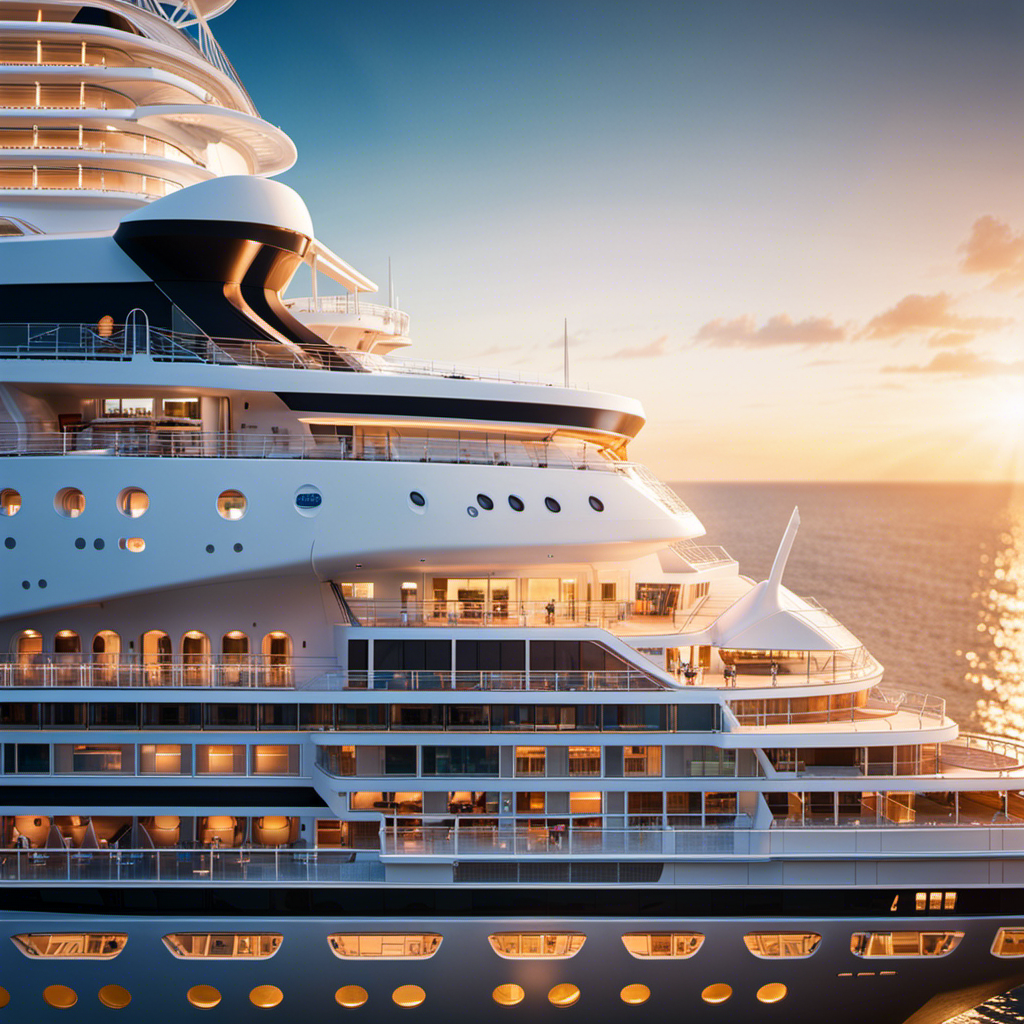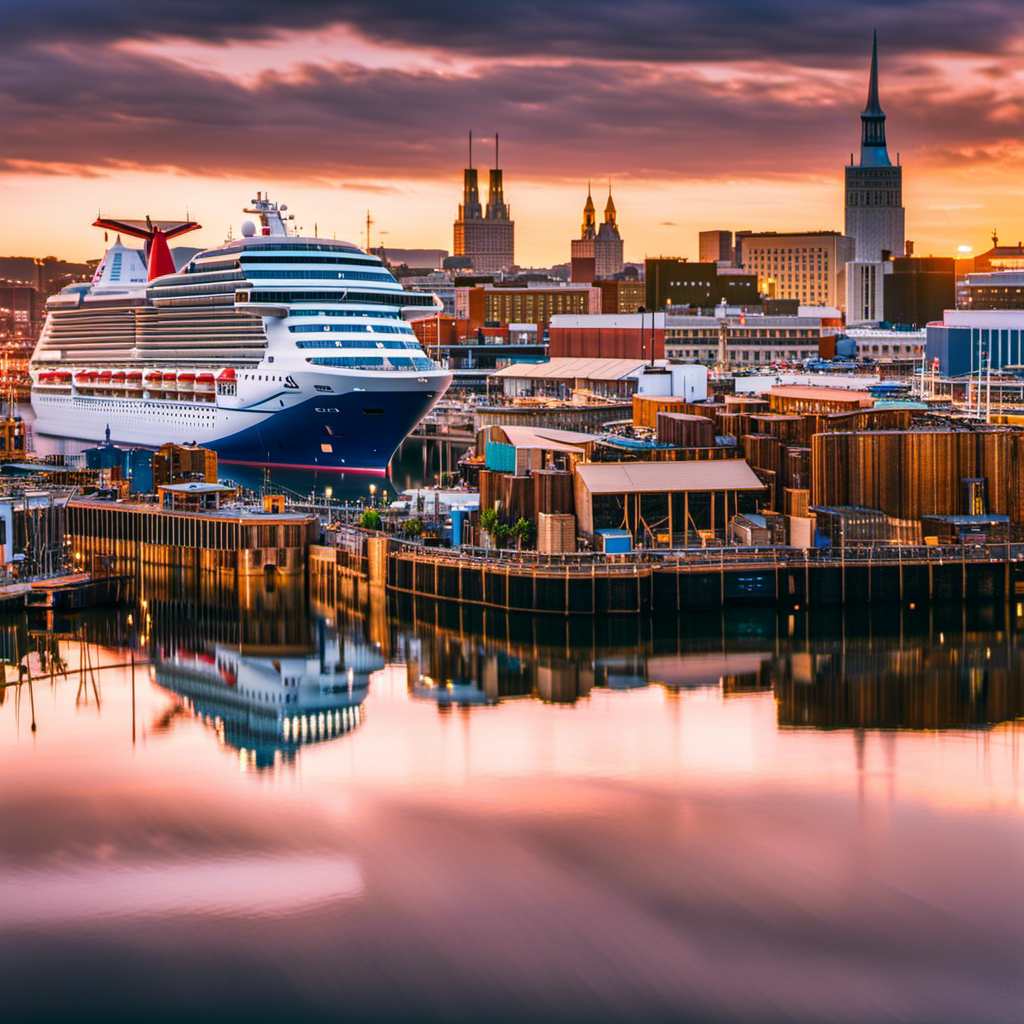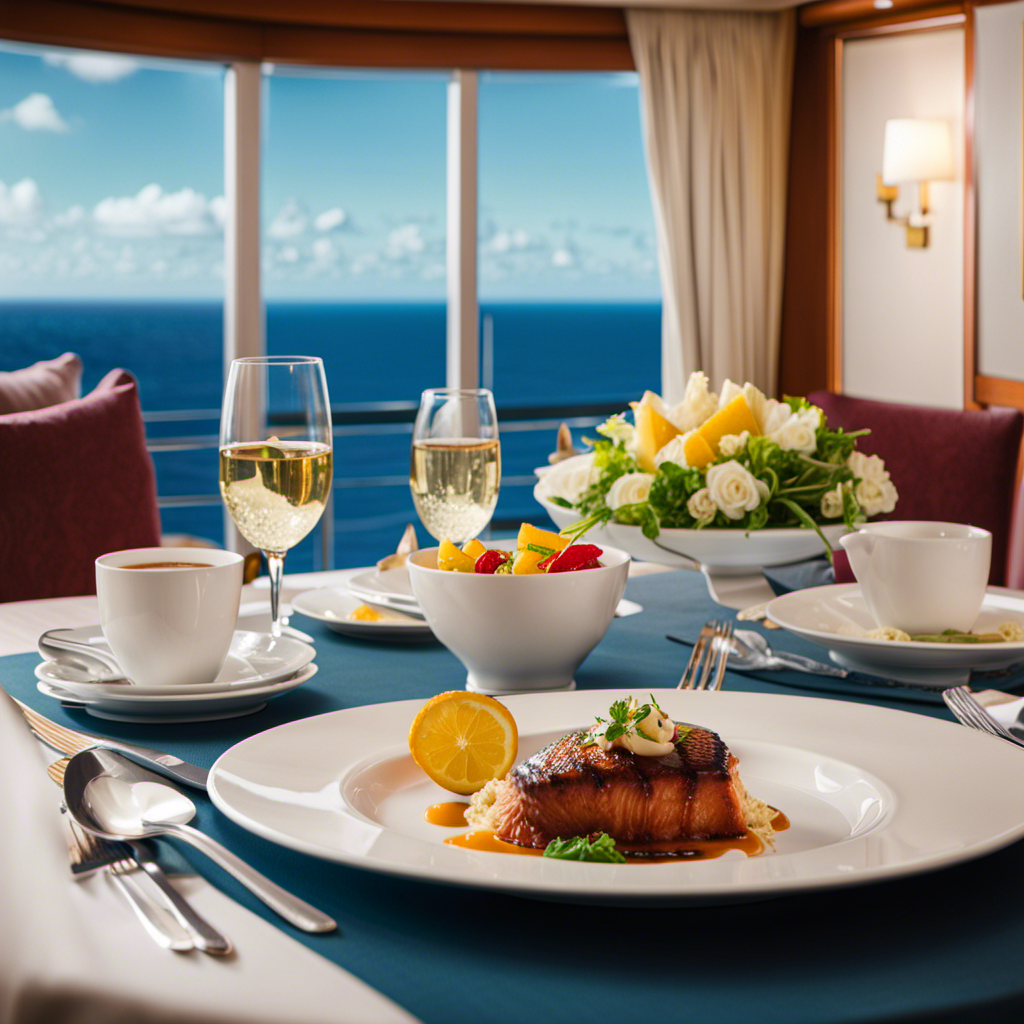As an individual deeply passionate about cruise ships, I have always been captivated by the development of their designs.
Did you know that three European shipbuilding groups, Fincantieri, Meyer, and STX, dominate the market?
In the past, cruise lines relied on outside help for ship designs, but now they have a better understanding of their customers’ needs and set the pace in the design process.
The construction process requires skilled project and financial management teams, with considerations such as lighting, plumbing, logistics, and size.
Join me as we explore how the cruise ship industry has shifted from collaboration to innovation, with cruise lines taking the lead in design and shipyards playing a vital role in bringing these designs to reality.
Key Takeaways
- Three European shipbuilding groups, Fincantieri, Meyer, and STX, dominate the cruise ship market.
- Cruise lines now have a better understanding of customer needs and set the pace in the design process.
- The construction process requires skilled project and financial management teams, with considerations such as lighting, plumbing, logistics, and size.
- Cruise ship design focuses on creating innovative and attractive features to provide a unique and memorable experience for passengers.
The Early Days of Cruise Ship Design
In the early days of cruise ship design, cruise lines relied on outside help for ship designs. Influential naval architects, such as Knud E. Hansen, played a crucial role in shaping the industry. Hansen, a Danish naval architect, designed the first Norwegian ships, setting the stage for future advancements in ship design.
Technological advancements in ship design have played a significant role in the evolution of cruise ships. These advancements have allowed for the creation of larger, more efficient vessels with innovative features.
Today, cruise lines have a better understanding of their customers’ needs and preferences, and they set the pace in the design process. This shift from collaboration to innovation has led to the creation of unique and memorable experiences for passengers.
The Shift Towards Customer-Centric Design
When designing cruise ships, my focus is on creating features that cater to the specific preferences of customers. In order to achieve this, I rely heavily on customer feedback and design customization.
Customer feedback plays a crucial role in understanding their needs, desires, and expectations. By actively listening to what customers want, I can tailor the design to meet their specific requirements. This includes everything from the layout of the cabins and public spaces to the selection of amenities and entertainment options.
Design customization allows me to create a unique and personalized experience for each passenger. Whether it’s a state-of-the-art spa, a variety of dining options, or innovative recreational activities, the goal is to provide a cruise ship that exceeds customer expectations and leaves them with unforgettable memories.
The Role of Shipyard Partnerships in Design Innovation
Working closely with shipyard partners allows me to bring my creative ideas to life and push the boundaries of design in the cruise ship industry. The importance of shipyard expertise cannot be overstated. Shipyards have the necessary knowledge and facilities for ship construction, ensuring that the design concepts are implemented successfully.
Collaborative design processes are at the core of this partnership. Designers work closely with shipyard teams to bring together their expertise and innovative ideas. This collaboration drives innovation in the industry, as shipyards bring their technical knowledge and experience to the table. They understand the intricacies of ship construction and can provide valuable insights during the design process.
Shipyard partnerships enable efficient project management and construction processes, ensuring that the final product meets the highest standards of quality and functionality.
Embracing Technology: From 2D to 3D Design
Embracing technology has revolutionized the shipbuilding industry, allowing for the transition from 2D to 3D design. This shift has had significant benefits and has had a profound impact on ship design.
Enhanced Visualization: 3D design provides a more realistic and detailed representation of the ship, allowing designers to visualize the final product with greater accuracy. This helps in identifying potential design flaws and making necessary modifications before construction begins.
Improved Collaboration: With 3D design, multiple stakeholders can easily review and provide feedback on the design, leading to better collaboration among architects, engineers, and shipyard teams. This streamlines the design process and reduces the risk of miscommunication.
Cost and Time Efficiency: 3D design allows for more efficient planning and coordination, resulting in reduced construction time and cost. It enables accurate material estimation, optimized construction sequences, and better utilization of resources.
The impact of digitalization on ship design through 3D technology has transformed the shipbuilding process, offering numerous benefits such as enhanced visualization, improved collaboration, and cost and time efficiency. This technological advancement has significantly contributed to the evolution of ship design and has revolutionized the shipbuilding industry.
Creating Unforgettable Experiences: Innovations in Cruise Ship Design
As a designer in the shipbuilding industry, I strive to create unforgettable experiences for passengers through groundbreaking features and amenities.
The role of architecture in ship design is crucial in achieving this goal. By carefully considering the layout, flow, and aesthetics of the ship, we can enhance the overall passenger experience.
We incorporate sustainability in cruise ship design by utilizing eco-friendly materials, implementing energy-efficient systems, and integrating renewable energy sources. This not only reduces the environmental impact of the ship but also creates a more sustainable future for the cruise industry.
We also focus on incorporating innovative technologies that enhance the onboard experience, such as virtual reality entertainment, smart cabin systems, and interactive onboard activities.
How Has the Evolution of Cruise Ship Design Impacted the Atrium Design on Modern Ships?
The evolution of cruise ship design has significantly impacted the atrium on cruise ship concept. Modern ships now feature larger, more extravagant atriums to create a grand entrance for passengers. With the focus on breathtaking architecture and innovative technology, the atrium has become a focal point for the overall guest experience.
Frequently Asked Questions
How Did the Early Cruise Ship Industry Rely on Outside Help for Ship Designs?
In the early days of the cruise ship industry, we relied on external expertise and collaboration for ship designs. We sought help from naval architects and engineering groups to create innovative and attractive features for our ships.
What Role Do Shipyard Partnerships Play in Driving Innovation in Cruise Ship Design?
Shipyard collaborations play a crucial role in driving innovation in cruise ship design. By partnering with shipyards, cruise lines can bring their design ideas to life, ensuring efficient project management and construction processes.
How Has Technology Transformed the Design Process From 2D to 3d?
Technology has transformed the design process from 2D to 3D. Collaborative design and virtual reality implementation allow for more accurate and immersive representations of the ship. It enhances communication and helps designers visualize and refine their ideas.
What Are Some Key Considerations in Creating Unforgettable Experiences Through Cruise Ship Design?
What are some key considerations in creating unforgettable experiences through cruise ship design? How can a collaborative approach and design principles come together to create innovative and attractive features that leave a lasting impression on passengers?
How Have Cruise Lines Evolved in Their Understanding of Customer Needs and Their Role in the Design Process?
I’ve noticed that cruise lines have become more attuned to customer needs and have taken a more active role in the design process. They incorporate customer feedback and use design thinking to create unforgettable experiences for passengers.










